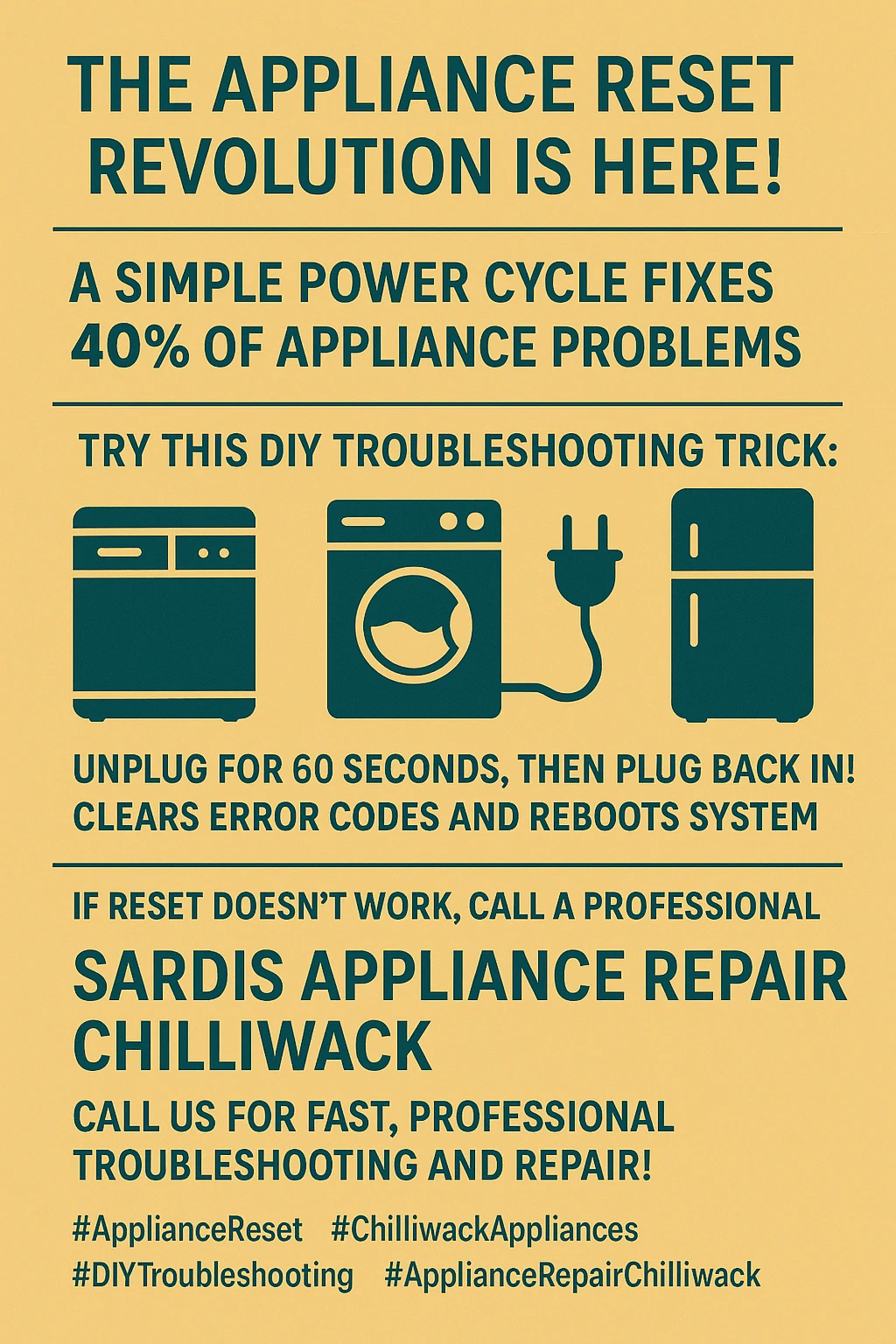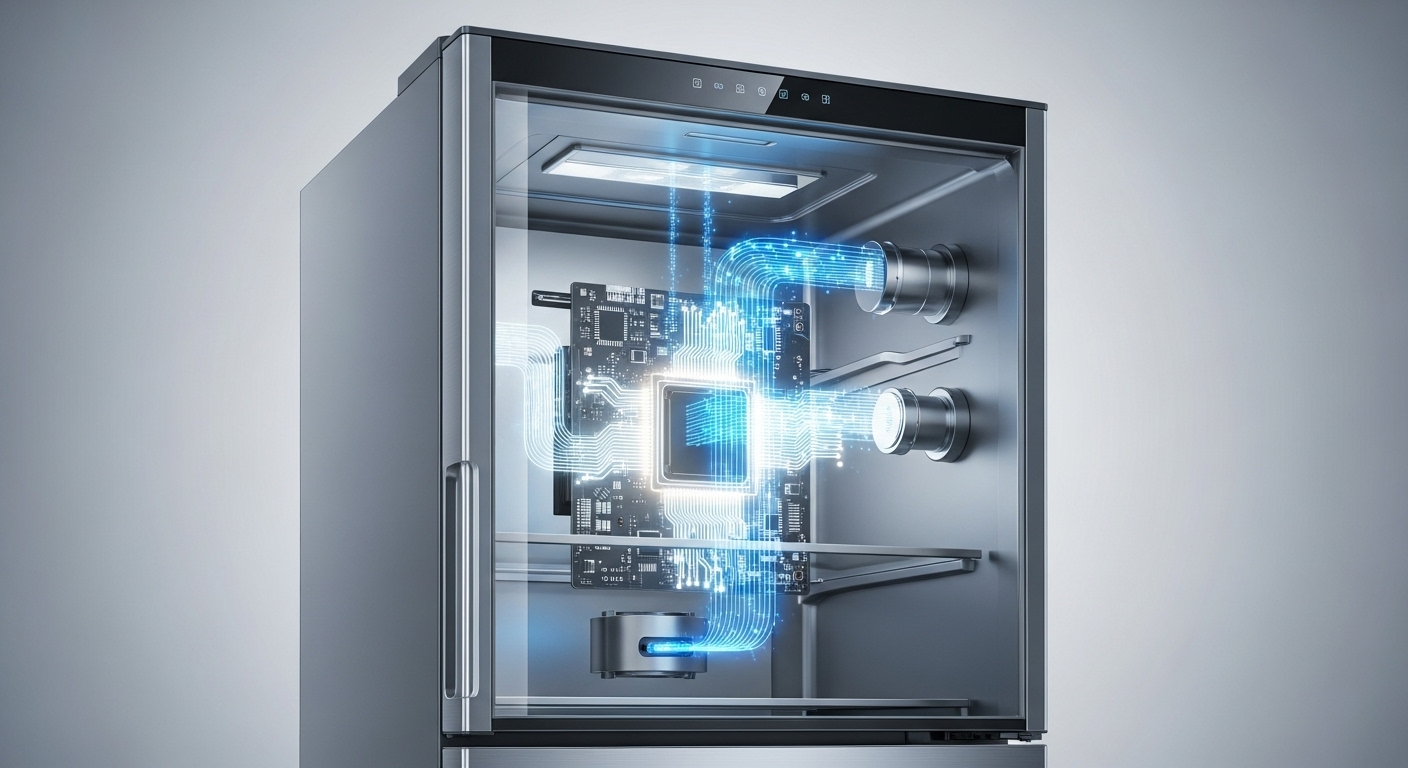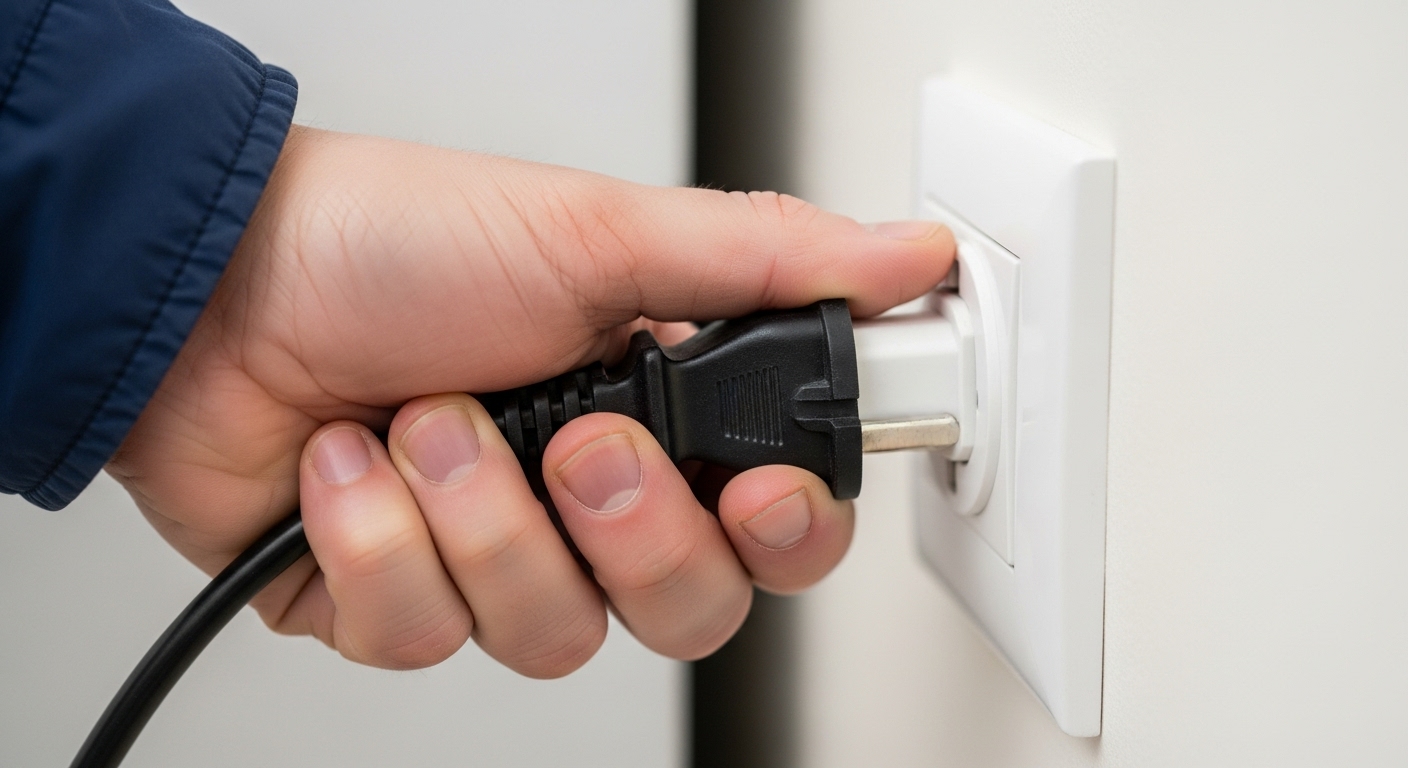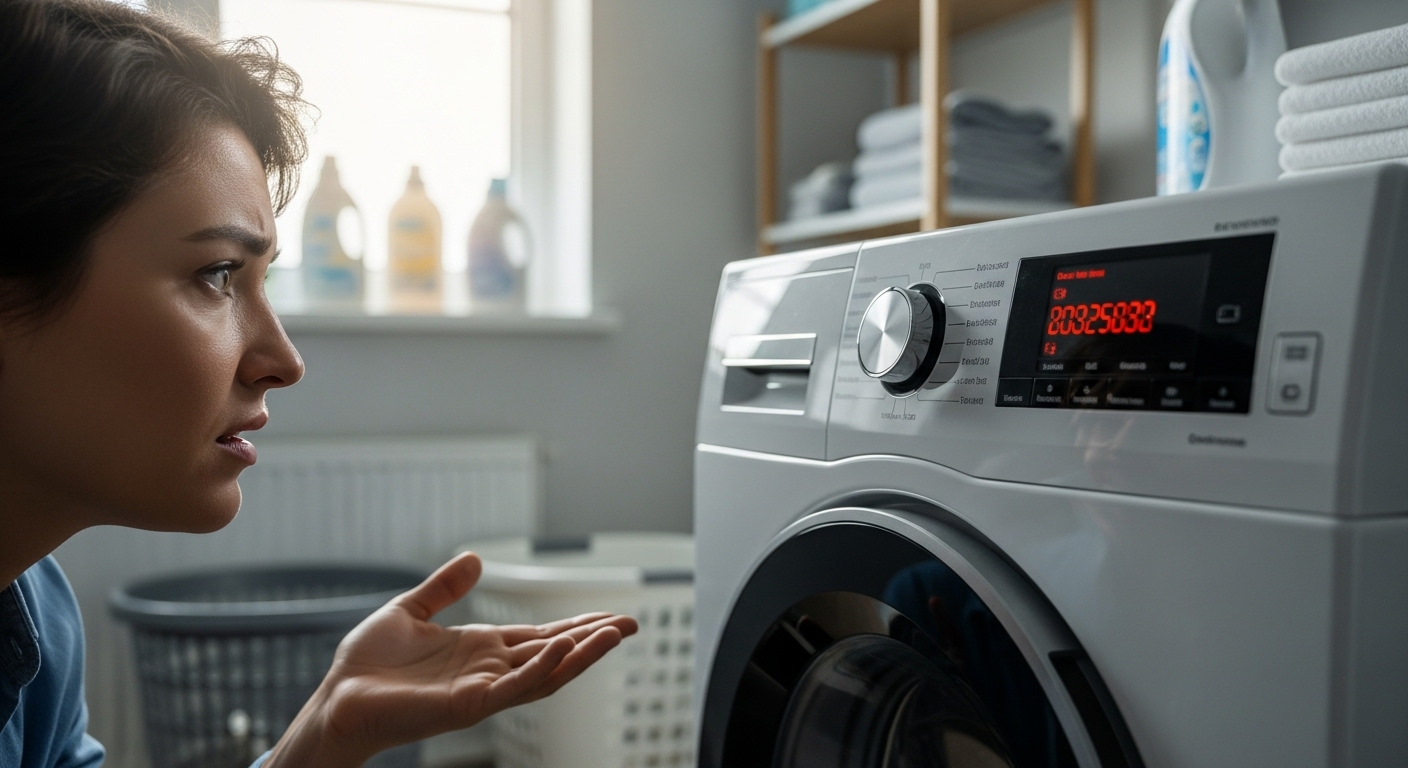The Appliance Reset Revolution: Why a Simple Power Cycle Fixes 40% of Appliance Problems (And When This Quick Fix Means You Need Professional Help)
Frustrated with appliances acting up and throwing mysterious error codes that disappear after unplugging them? You’re experiencing the appliance reset phenomenon that’s saving Chilliwack homeowners hundreds in unnecessary service calls while revealing when simple fixes become serious problems.
Picture this: you’re rushing to get laundry done before guests arrive, and your washing machine decides to display a cryptic error code and refuse to start. Your dishwasher stops mid-cycle with dishes still dirty. Your refrigerator’s ice maker goes silent for no apparent reason. Before you reach for the phone to call a repair technician, there’s a simple troubleshooting step that resolves nearly half of all appliance problems in under five minutes.
Modern appliances contain sophisticated computer control boards that manage everything from water temperature to spin speeds, making them susceptible to the same electronic glitches that affect smartphones and laptops. These computerized systems can freeze, accumulate error codes, or lose communication with sensors—problems that often clear completely with a proper power cycle reset.
In Chilliwack’s unique climate, with coastal moisture mixing with interior temperature swings, appliances face additional electronic stress that makes understanding reset protocols particularly valuable. The humid conditions during rainy season and freeze-thaw cycles near Chilliwack Mountain create the perfect storm for electronic component stress that manifests as mysterious errors requiring resets.
Key Outtakes
- Power cycling by unplugging for 1-3 minutes resolves error codes, frozen controls, and minor electronic glitches in most modern appliances by clearing residual power and resetting internal computers
- Washing machines require specific reset sequences including unplugging for one minute and sometimes performing calibration cycles after part replacement to restore proper function
- Circuit breaker resets differ from power cycle resets and both should be attempted before scheduling service calls, potentially saving Chilliwack homeowners $139-169 in diagnostic fees
- Repeated need for resets signals failing control boards, sensor malfunctions, or electrical issues that require professional diagnosis rather than continued power cycling
- Appliances should remain unplugged for several minutes rather than seconds to fully discharge capacitors and allow internal systems to completely reset, with refrigerators requiring up to 24 hours for temperature restabilization

Understanding Why Modern Appliances Need Electronic Resets
Today’s appliances aren’t the mechanical workhorses your grandparents owned—they’re essentially computers with motors attached. Every major appliance now contains a control board that acts as the brain of the machine, communicating with sensors that monitor water levels, temperatures, door positions, and cycle timing. These electronic control boards represent the most expensive component to replace in many appliances, with costs that frequently exceed the value of attempting repair versus purchasing a replacement unit.

The computerization of household appliances brings tremendous benefits in terms of efficiency and programmable convenience, but it also introduces the same vulnerabilities that plague all electronic devices. Control boards can freeze when processing conflicts arise, accumulate corrupted data that prevents normal operation, or lose communication with peripheral sensors. Unlike mechanical failures that typically worsen progressively, electronic glitches often appear suddenly and can disappear just as mysteriously with proper reset procedures.
Consumer Reports data analyzing over 381,000 appliances shows that control panel and circuit board issues account for approximately 4-5% of all appliance complaints across major categories. These electronic failures don’t follow the gradual degradation pattern of mechanical wear—they manifest as sudden malfunctions that often respond completely to power cycling procedures. Understanding this fundamental difference between electronic and mechanical failures helps homeowners avoid unnecessary service calls while recognizing when professional intervention becomes necessary.
Modern appliances continue drawing minimal power even when switched off, creating phantom loads that account for roughly 10% of average household energy bills. This residual electrical charge must be fully discharged through unplugging to achieve complete system resets. The energy-saving benefits of strategic unplugging extend beyond troubleshooting, providing both cost savings and reduced fire risks while maintaining appliance health.
Chilliwack’s position between coastal moisture and interior climate zones creates unique challenges for appliance electronics that other regions don’t face. Unlike prairie locations with consistent cold temperatures or coastal Vancouver with milder conditions, Chilliwack experiences pronounced freeze-thaw cycles that cause electronic connections to expand and contract repeatedly. This thermal cycling makes appliances more susceptible to loose connections that manifest as control errors requiring resets, particularly in areas near Chilliwack Mountain where temperature fluctuations are most severe.
The Universal Power Cycle Reset Protocol
Before attempting any appliance reset, safety and preparation steps protect both homeowner and appliance while ensuring the reset addresses the actual problem rather than masking external issues. The foundation of effective troubleshooting starts with verifying that the appliance actually has proper electrical power—a surprisingly common oversight that leads to unnecessary reset attempts when the real issue lies with tripped breakers or failed outlets.

Testing power sources should always precede reset procedures, as confirmed by appliance professionals who note that checking electrical connections represents the number one troubleshooting step when appliances fail to power on. Circuit breakers require inspection first, particularly for hardwired appliances where unplugging isn’t possible. Consumer manuals provide appliance-specific troubleshooting guidance that often resolves issues without power cycling, making manual consultation a valuable pre-reset step.
The standard one-minute reset procedure forms the foundation of appliance power cycling, though experts increasingly recommend extending this period to several minutes for more complete capacitor discharge. For washing machines, the protocol involves unplugging from the electrical outlet or flipping the breaker switch off for at least one minute before restoring power. Dishwashers follow similar timing, with hardwired models requiring breaker shutdown for one minute before reactivation.
Refrigerators demand the longest reset periods due to their continuous operation and complex refrigeration cycles. These appliances must remain unplugged for several minutes minimum, otherwise the reset procedure fails to achieve complete system clearing. The refrigeration system requires time to equalize pressures and allow compressor protection circuits to reset properly.
Post-reset verification requires patience, as different appliances need varying periods for complete system restoration. Refrigerators require the most extensive recovery time, with temperature stabilization taking up to 24 hours before normal operation resumes. Rushing this process undermines the reset procedure’s effectiveness and may create additional problems through premature loading or operation.
Appliance-Specific Reset Techniques

Washing machines present some of the most complex reset scenarios due to their sophisticated sensors and safety systems. Beyond standard power cycling, these appliances often require specialized recalibration sequences, particularly after installing new parts or experiencing persistent error codes. Whirlpool’s official reset procedures include specific dial manipulation sequences that engage calibration modes essential when sensors become unresponsive or the machine loses awareness of its operational state.
The recalibration process for Whirlpool washers requires precise timing and sequence execution: turn the dial knob counterclockwise 360 degrees, then three clicks right, once left, and right again—all within three seconds of starting the sequence. This calibration mode becomes essential when parts aren’t working correctly or when the machine doesn’t recognize its current state, situations common after power outages or when error codes persist despite standard resets.
Front-loading washers require additional considerations due to their sealed door mechanisms and vulnerability to mold issues that power cycling cannot address. Consumer Reports data reveals that 14% of front-loader complaints involve mold appearance, making this the biggest issue category for these units. Door lock mechanisms frequently require separate reset procedures, typically involving pressing the Control Lock button for three seconds to unlock systems that may have engaged during power fluctuations.
Dishwashers often enter locked or sleep states that mimic serious malfunctions but resolve without full power cycling. Control lock settings designed to prevent unintended use can activate during power fluctuations, preventing the dishwasher from starting when homeowners expect normal operation. Sleep mode activation requires simple door cycling or pressing Start/Resume buttons rather than full electrical resets.
Samsung dishwashers specifically benefit from resets when encoun
 (604) 305-2992
(604) 305-2992 
 Schedule An Appointment
Schedule An Appointment 
